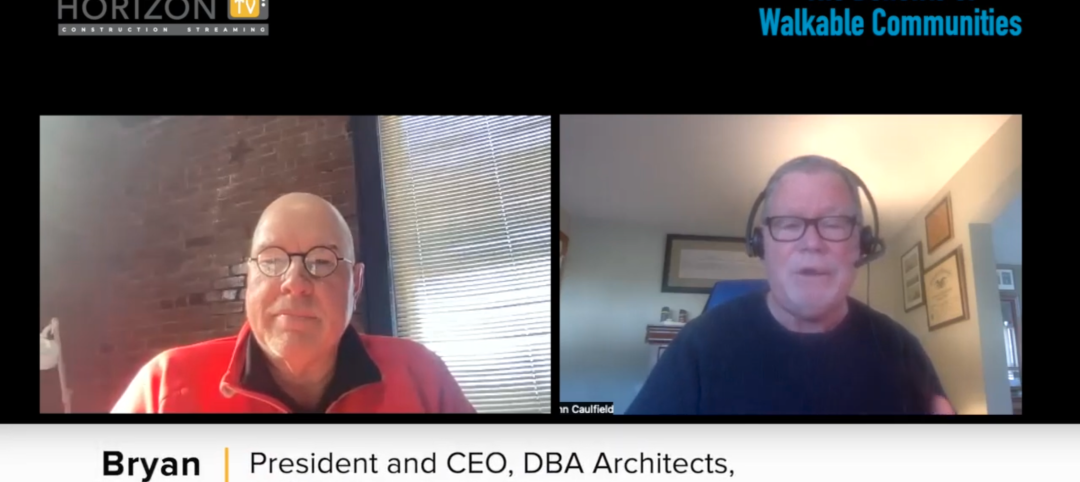Five years ago, when the net-zero energy building movement was starting to take hold in the U.S., it was unfathomable to think that budget-stretched school districts would consider investing in the high-performance systems and strategies necessary for achieving net-zero energy performance.
But coming out of the recession, still bruised and battered and in severe belt-tightening mode, school officials are beginning to take note. In the past few years, a number of net-zero or net-zero-ready K-12 school projects—both public and private—have come online. And dozens more are in the works. Rob Winstead, Principal and Director of Sustainability at SHW Group (www.shwgroup.com), estimates the number to be between 35 and 50 NZE or NZE-ready K-12 school projects nationally, with many more in the feasibility stage.
“As the economy begins to improve, we’re hearing more interest from our K-12 clients in exploring net-zero,” says Winstead, who’s firm is designing two NZE-ready schools in Texas: Pflugerville Elementary School in Pflugerville and the Richard J. Lee Elementary School in Dallas.
Why now?
It comes down to being able to predict and control costs, and eliminate volatility in utility costs for the life of the building. Next to staffing, utilities are the biggest budget line item for most schools and one of the few fixed operational costs that can be significantly reduced, or even negated. For that reason, some school officials are looking past the initial sticker shock for NZE strategies (and other measures, like retro-commissioning) and are taking a longer-term view, projecting the savings over time.
The Building Team for the Pflugerville Elementary School includes: SHW Group (architect, SE), CMTA Engineers (MEP), and Balfour Beatty (contractor).
“Our K-12 clients are being asked to provide a higher level of service—whether it’s special programs, testing requirements, or extending the school day—while their budgets are being reduced,” says Winstead. “They realize that every dollar saved on operations and maintenance costs is a dollar that can be spent for other programs.”
Getting ready for net zero
While there are a handful of true NZE schools in the U.S., notably the Living Building-certified Bertschi School Living Building Science Wing in Seattle, the staggeringly high cost of renewable energy systems prevents most school districts from achieving net-zero energy performance. Many of these owners are taking a practical approach, building highly energy-efficient, NZE-ready facilities that can be retrofitted with renewable systems at a later date.
In both of SHW Group’s NZE-ready projects, Winstead says the Building Team pushed for the inclusion of as many renewable systems as the districts could afford in the initial bid package. Having renewables not only supported the curriculum efforts, but gave the school districts skin in the NZE game, so to speak, thereby increasing the odds that they will continue to pursue their original energy goals.
“Many of these projects start out as net-zero, but the renewable systems and many of the high-performance design measures are eventually value engineered out as the budgets are scrutinized,” says Winstead. “K-12 projects are complex, with many stakeholders with different agendas.”
Having a net-zero mindset, says Winstead, changes the entire discussion about the building design and energy-efficiency strategies. All of a sudden, upgrades to the building design are not considered cost premiums, but rather cost avoidances in renewable technology.
At 150,000 sf, the Lady Bird Johnson Middle School in Irving, Texas, is the nation’s largest net-zero energy school. The school has project-based learning programs based on the facility’s energy and water systems. Four “nodes,” each with multiple digital, interactive displays, focus on solar, wind, geothermal, and water conservation. The Building Team for the Lady Bird Johnson Middle School included Corgan Associates (architect, interior designer), L.A. Fuess Partners (SE), Image Engineering Group (MEP), and Charter Builders (contractor).
“Once you have the net-zero goal firmly established, it’s not about the 20 cents of added cost per square foot for additional roof insulation; it’s about the $4 per watt we’re avoiding on the renewable side,” he says.
The goal, says Winstead, is achieving a building energy use intensity of 20 kBtu/sf/year or better—roughly one-fourth the energy use of the average K-12 building. That’s the threshold where the first cost for renewable systems is within reach for some school clients.
“Even if they delay—or cancel—the renewable purchase, they end up with a building that has a fraction of the utility demand,” he says.
Using net-zero as a teaching tool
Schools are able to further justify the upfront investments for NZE strategies by incorporating the lessons and data from the building systems into the curriculum. In fact, this “living lab” approach is often the “secret sauce” for winning over the many stakeholders on the idea of net-zero.
The 150,000-sf Lady Bird Johnson Middle School in Irving, Texas, which opened in fall 2011 as the nation’s largest net-zero energy school, has project-based learning programs based on the facility’s energy and water systems. Four “nodes,” each with multiple digital, interactive displays, focus on solar, wind, geothermal, and water conservation.
At the Pflugerville school, a centralized “discovery zone” will house the library, gym, and cafeteria and will feature digital, interactive displays and temporary exhibits demonstrating how the building’s systems and sustainable features are performing. Other projects incorporate small, ground-level photovoltaic installations and exposed infrastructure so students can get up close and interact with the systems.
As more NZE school projects come online over the next five years, the question becomes: Is net-zero energy a more logical approach for school districts than a holistic green building? Some school districts see NZE as a win-win—they get enhanced educational programming while greatly reducing utility expenses.
Related Stories
Airports | Feb 28, 2023
Data visualization: $1 billion earmarked for 2023 airport construction projects
Ninety-nine airports across 47 states and two territories are set to share nearly $1 billion in funding in 2023 from the Federal Aviation Administration. The funding is aimed at help airports of all sizes meet growing air travel demand, with upgrades like larger security checkpoints and more reliable and faster baggage systems.
Seismic Design | Feb 27, 2023
Turkey earthquakes provide lessons for California
Two recent deadly earthquakes in Turkey and Syria offer lessons regarding construction practices and codes for California. Lax building standards were blamed for much of the devastation, including well over 35,000 dead and countless building collapses.
Sports and Recreational Facilities | Feb 27, 2023
New 20,000-seat soccer stadium will anchor neighborhood development in Indianapolis
A new 20,000-seat soccer stadium for United Soccer League’s Indy Eleven will be the centerpiece of a major neighborhood development in Indianapolis. The development will transform the southwest quadrant of downtown Indianapolis by adding more than 600 apartments, 205,000 sf of office space, 197,000 sf for retail space and restaurants, parking garages, a hotel, and public plazas with green space.
Architects | Feb 27, 2023
Hord Coplan Macht announces retirement of Founder/CEO Lee Coplan, FAIA, and names successor
Hord Coplan Macht, an award-winning integrated architecture, interior design, landscape architecture, and planning firm, announces the retirement of Founder and Chief Executive Officer Lee Coplan, FAIA. Lee leaves behind a long and celebrated career leading the practice over the last four decades while bringing innovative design strategies and leadership to the architecture and design community.
Libraries | Feb 26, 2023
A $17 million public library in California replaces one that was damaged in a 2010 earthquake
California’s El Centro community, about two hours east of San Diego, recently opened a new $17 million public library. With design by Ferguson Pape Baldwin Architects and engineering services by Latitude 33 Planning & Engineering, the 19,811-sf building replaces the previous library, which was built in the early 1900s, damaged by a 7.2 earthquake that struck Baja California in 2010, and demolished in 2016.
Architects | Feb 24, 2023
7 takeaways from HKS’s yearlong study on brain health in the workplace
Managing distractions, avoiding multitasking, and cognitive training are key to staff wellbeing and productivity, according to a yearlong study of HKS employees in partnership with the University of Texas at Dallas’ Center for BrainHealth.
University Buildings | Feb 23, 2023
Johns Hopkins shares design for new medical campus building named in honor of Henrietta Lacks
In November, Johns Hopkins University and Johns Hopkins Medicine shared the initial design plans for a campus building project named in honor of Henrietta Lacks, the Baltimore County woman whose cells have advanced medicine around the world. Diagnosed with cervical cancer, Lacks, an African-American mother of five, sought treatment at the Johns Hopkins Hospital in the early 1950s. Named HeLa cells, the cell line that began with Lacks has contributed to numerous medical breakthroughs.
Arenas | Feb 23, 2023
Using data to design the sports venue of the future
Former video game developer Abe Stein and HOK's Bill Johnson discuss how to use data to design stadiums and arenas that keep fans engaged and eager to return.
Museums | Feb 22, 2023
David Chipperfield's 'subterranean' design wins competition for National Archaeological Museum in Athens
Berlin-based David Chipperfield Architects was selected as the winner of the design competition for the new National Archaeological Museum in Athens. The project will modernize and expand the original neoclassical museum designed by Ludwig Lange and Ernst Ziller (1866-1874) with new spaces that follow the existing topography of the site. It will add approximately 20,000 sm of space to the existing museum, as well as a rooftop park that will be open to the public.
Multifamily Housing | Feb 21, 2023
Watch: DBA Architects' Bryan Moore talks micro communities and the benefits of walkable neighborhoods
What is a micro-community? Where are they most prevalent? What’s the future for micro communities? These questions (and more) addressed by Bryan Moore, President and CEO of DBA Architects.




















